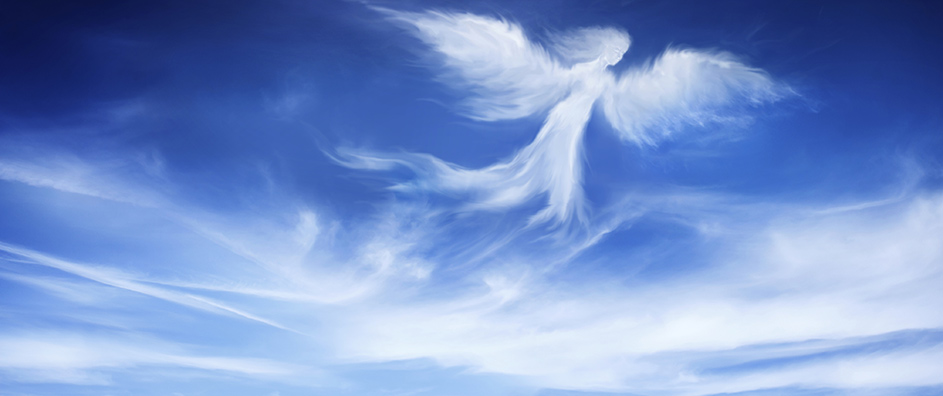The concept of the Maid of Heaven within the context of Bahá’í teachings represents a nuanced intersection between divinity and femininity. This idea resonates deeply with both scholars and adherents, capturing a profound sense of reverence. The Maid of Heaven embodies more than an emblematic figure; she symbolizes the emergence of the Divine Feminine within spiritual discourse, reflecting an intrinsic balance within the Bahá’í Faith. This article explores the multifaceted dimensions of the Maid of Heaven, her theological significance, and the implications for contemporary spiritual understanding.
To appreciate the essence of the Maid of Heaven, one must first delve into the Bahá’í conception of God. In the Bahá’í Faith, God is perceived as an ineffable, transcendent reality, the source of all creation. However, Bahá’u’lláh, the founder of the faith, emphasizes attributes of love, compassion, and nurturing—qualities traditionally associated with the feminine. This duality enhances the portrayal of God as neither strictly masculine nor feminine but as encompassing the fullness of both. The Divine Feminine, thus, becomes a vital component of understanding the divine nature in the Bahá’í worldview.
The Maid of Heaven is often linked to the figure of the Báb, Bahá’u’lláh’s precursor, who experienced a powerful spiritual vision. During this moment, the Maid appeared as a guiding presence, bestowing upon him divine knowledge and insight. The ethereal qualities of the Maid—epitomized by her purity, wisdom, and grace—serve to humanize the divine while simultaneously elevating human experiences to a celestial level. This portrayal invites adherents to cultivate a relationship with the Divine that transcends traditional patriarchal frameworks, steering the spiritual discourse towards inclusivity.
In exploring the fascination surrounding the Maid of Heaven, one may consider the broader implications of feminine archetypes across various spiritual traditions. Throughout history, femininity has often been linked to notions of nurturing and compassion; however, these traits were historically marginalized in many religious circles. The Maid of Heaven’s representation in the Bahá’í Faith counters this marginalization, inviting seekers to value and embrace the wisdom inherent in the feminine divine. Thus, the Maid operates as a crucible of empowerment, allowing individuals to reconnect with qualities they may have been denied in other theological discussions.
The matter of reverence towards the Maid of Heaven also evokes deeper inquiries regarding the unity of humanity—a core principle within the Bahá’í Faith. The Maid, as a personification of divine grace, signals a potential for harmonization among disparate aspects of existence, including gender dichotomies. By fostering an understanding of the divine as inclusive and multifaceted, one opens the door to a more equitable spiritual community. This transformation can catalyze a shift in societal norms towards recognizing and valuing the contributions of women within religious and secular domains.
Furthermore, the inquiries surrounding the Divine Feminine in Bahá’í theology resonate with contemporary conversations on gender equity, spirituality, and leadership. As society tends to grapple with issues of inequality and representation, the Maid of Heaven emerges as a powerful symbol of balance—offering wisdom that transcends gendered limitations. Not only does she represent a voice for women, but she also harmonizes the dualities of existence. By embodying the interplay of masculine and feminine, she invites every individual to integrate these aspects within themselves, fostering personal and collective growth.
The artistic depictions of the Maid of Heaven also serve as significant reflections of her spiritual stature. In various artistic mediums, she is often portrayed enveloped in light, demonstrating a divine radiance that evokes an almost mythical quality. This artistic manifestation not only illustrates her importance within the Bahá’í Faith but also encourages deeper contemplation of divine beauty and spiritual awakening. Such portrayals resonate with the intrinsic desire of individuals to connect with the sacred through visual expressions, evoking feelings of reverence and awe.
Furthermore, the narrative of the Maid invites scholarly exploration of the symbolism associated with her presence. The Maid of Heaven can be seen as a bridge between earthly existence and the celestial realm, encapsulating the Bahá’í teachings about the potential for spiritual enlightenment. This metaphorical stance posits the Maid as a mediator, fostering a dialogue between the divine and humanity. The understanding that divine support is accessible and responsive to human spiritual yearnings generates a compelling narrative that resonates across cultural and temporal divides.
The fascination with the Maid of Heaven also reflects a growing desire for holistic spirituality that acknowledges and celebrates diversity—in thought, experience, and expression. The current zeitgeist favors inclusivity, urging individuals to seek resonances that encompass a plethora of perspectives. In light of this, the Maid of Heaven’s embodiment of the Divine Feminine serves not only as a spiritual archetype but also as a mirror reflecting the evolving nature of societal values and aspirations.
In conclusion, the Maid of Heaven illuminates the intricate interplay between divine love, femininity, and human experience within the Bahá’í Faith. Through her representation, the teachings highlight the necessity for a balanced spiritual perspective—one that recognizes the profound significance of the Divine Feminine. As seekers engage with her symbolism, they are invited to explore new realms of understanding, ultimately nurturing a richer, more inclusive spiritual discourse that bridges divides and transcends conventional boundaries. In doing so, the Maid of Heaven not only captivates the imagination but also deepens the connection between the divine and the human, fostering a transformative spiritual journey for all.
